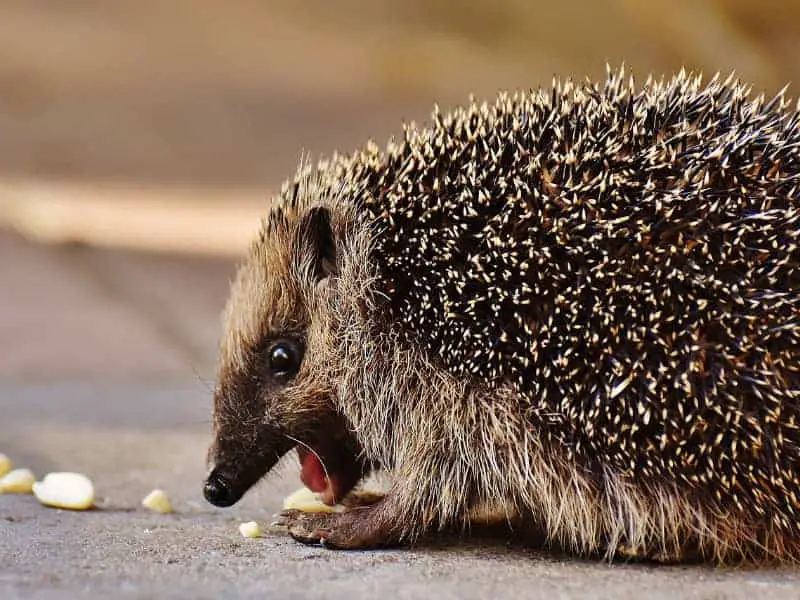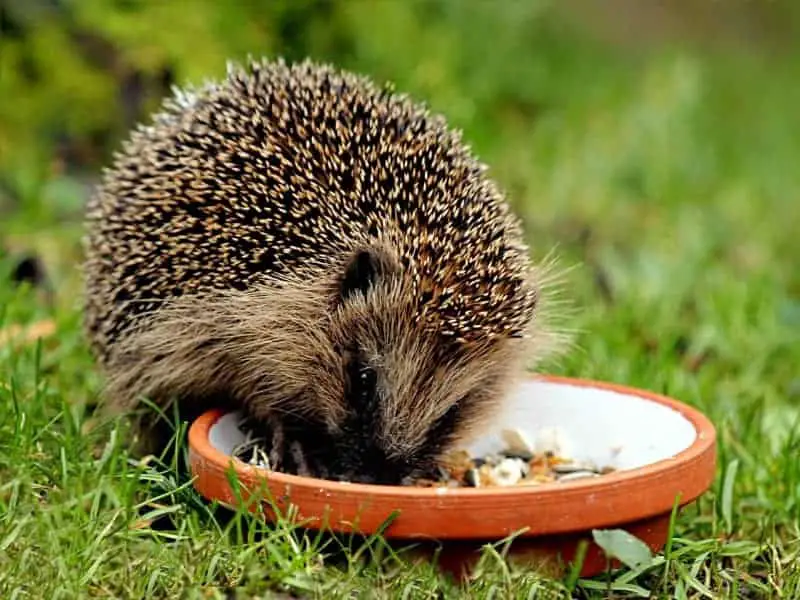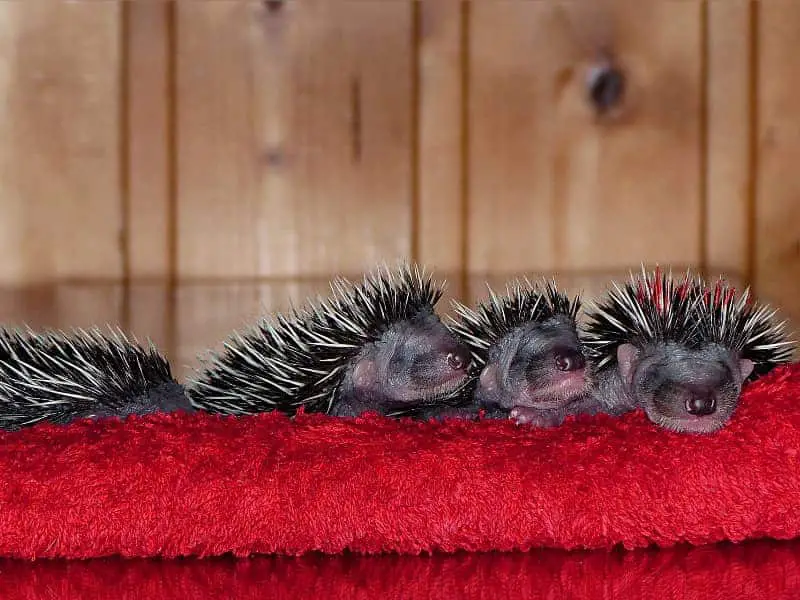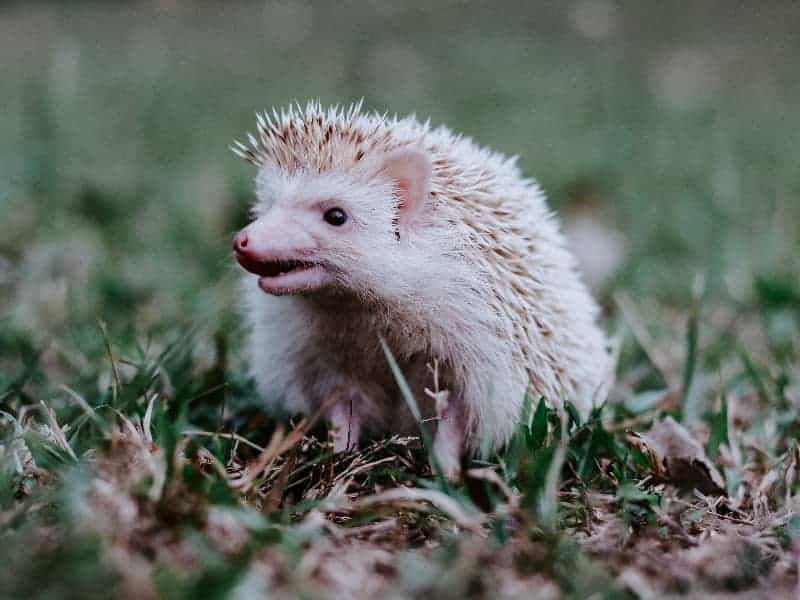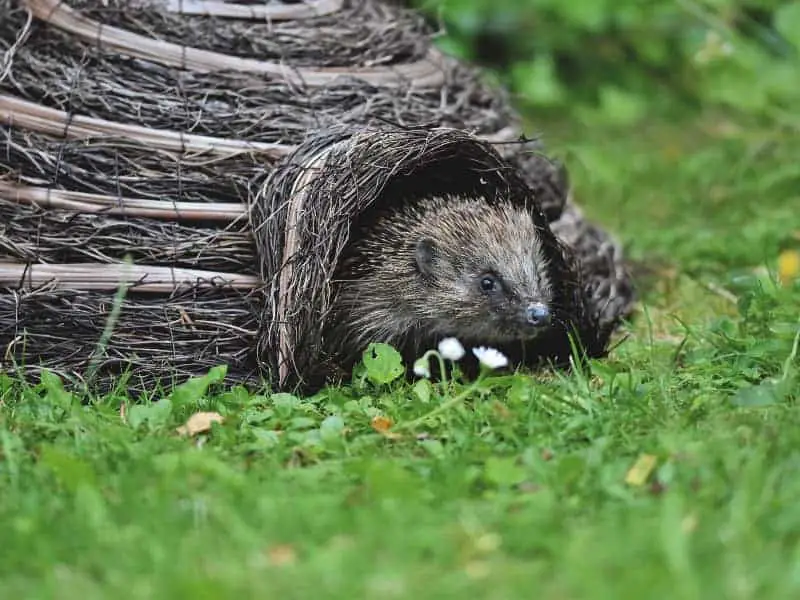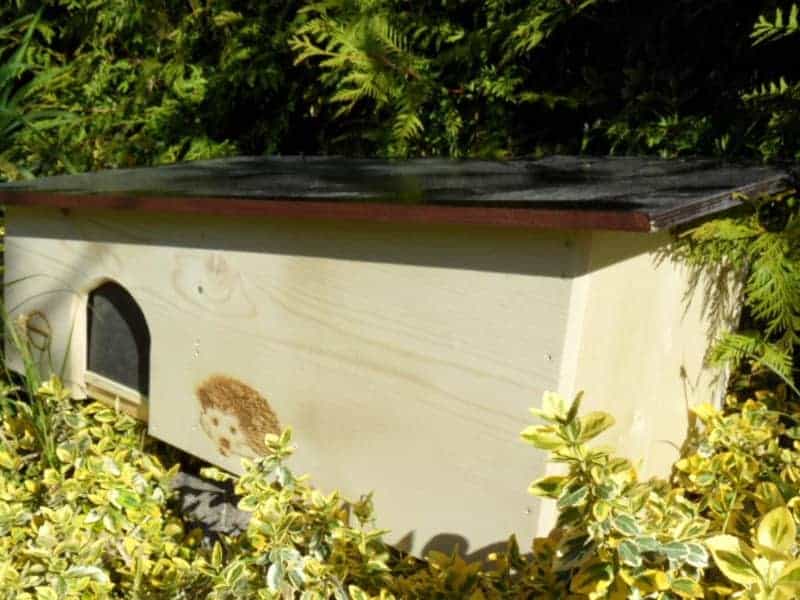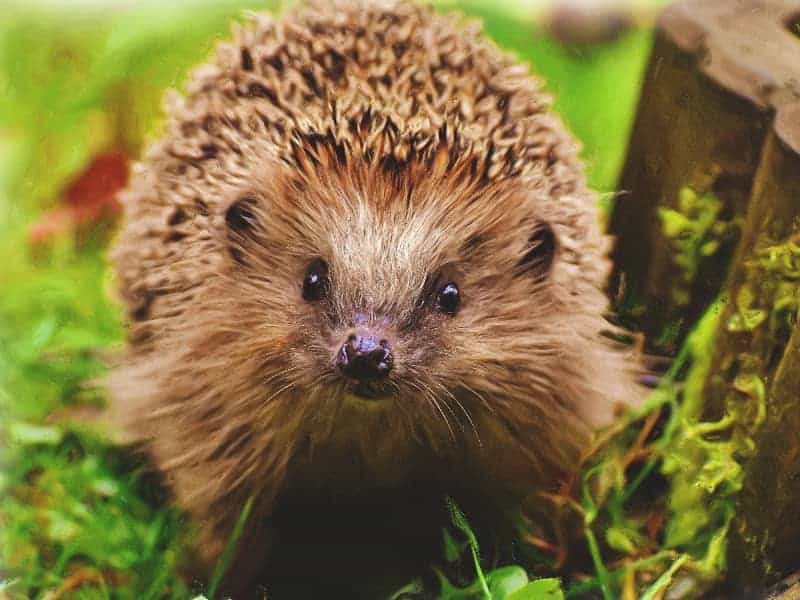
Is a hedgehog a mammal?
The question can be answered with YES. The hedgehog is a mammal that prefers to eat insects. There are 24 species of the mammal hedgehog worldwide. The best known mammal is the brown-breasted hedgehog (Erinaceus europaeus). You can find this hedgehog all over Europe. Some of the animals are even found in New Zealand. There the mammal hedgehog was introduced by the settlers.
Hedgehog a mammal - the different subspecies
Among the hedgehogs, the rat hedgehogs (Galericinae or Hylomyinae) and the spiny hedgehog (Erinaceinae) are also known. The rat hedgehog is found primarily in East and Southeast Asia. The mammal resembles a large shrew or rodent rather than a hedgehog. The spiny hedgehog has its home in Europe, Asia and Africa. The special characteristic of this mammal are the long and dense spines.
Hedgehog a mammal - its appearance
On average, mammals hedgehogs grow 32 m long and weigh between 450 and 700 grams. Thereby the weight is strongly dependent on the age and the season. Most hedgehogs have a brown or gray-brown coloration. The upper side of the mammal is densely covered with spines. Thereby the spiny coat of the mammal extends Hedgehog from the base of the forehead over the back to the tail and laterally to the base of the abdomen. The spiny coat protects the hedgehog from predators. In case of danger, the hedgehog can quickly curl up into an impenetrable ball of spines.
On the head of the hedgehog you can see the round and black beady eyes and the ears, which are covered with fur. Characteristic of the hedgehog, the mammal is that its front legs are shorter than the hind legs. On all four paws the hedgehog has claws. The length of the tail is 2 to 4.5 cm, depending on the size of the animal.
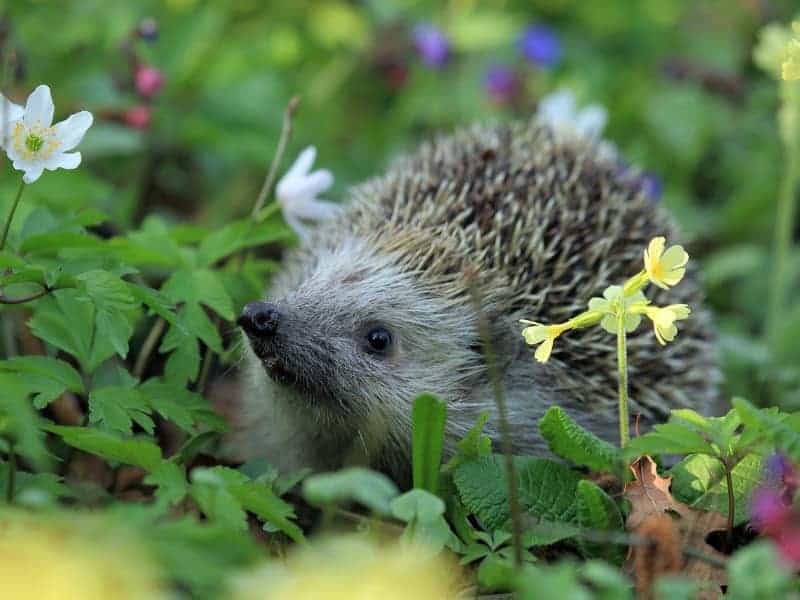
Peculiarities of the hedgehog
Probably you have already observed that the hedgehog can spit. This has nothing to do with bad upbringing, but is due to his Jacobson's organ. This additional taste organ is located on the palate of the hedgehog. If the hedgehog encounters something that he cannot immediately recognize, he sniffs at it. In addition, he chews on it until a foamy saliva is formed.
It then transports this saliva to the Jacobson's organ. There it is recognized whether it is prey or just a piece of soft wood.
What does the hedgehog eat?
Besides the already mentioned insects and spiders, the hedgehog also likes frogs, snakes, lizards and eggs, as well as mushrooms and larvae of butterflies. Occasionally, it also happens that the hedgehog eats a small bird. In winter, the mammal hedgehog does not eat food, but feeds on the accumulated fat reserves.
In a pinch, when no suitable feeders can be found, then. eats the hedgehog also snails, as well as earthworms. For the most part, these animals are sick. They serve as intermediate hosts for the dangerous lungworm, which makes the hedgehog sick.
What is the habitat of the mammal hedgehog?
The hedgehog loves hedges, bushes and forest edges. Also in the city you see hedgehogs more and more often. There they live in parks or in gardens. The mammal hedgehog belongs to the nocturnal animals. This means that it only becomes active at dusk. Hedgehogs spend the day in their nest. Hedgehogs are solitary animals and only make contact with other conspecifics during the mating season.
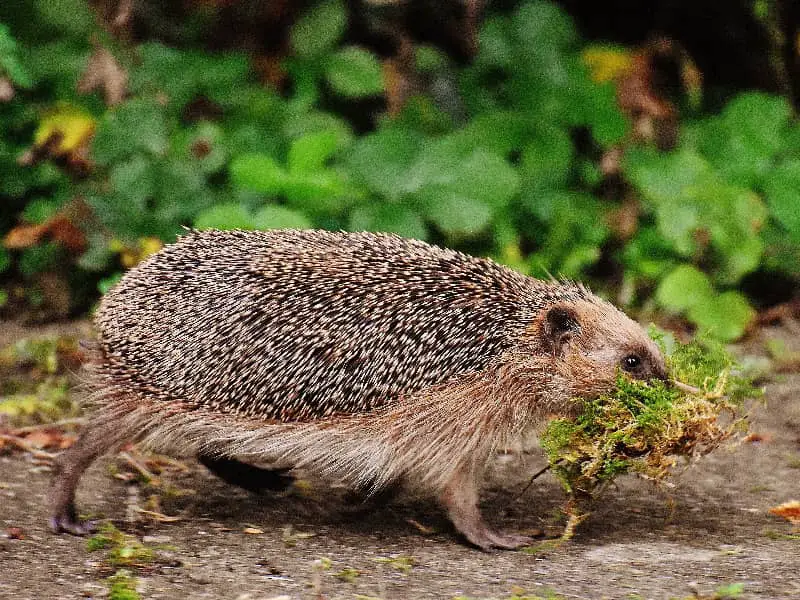
Offspring of the mammal hedgehog
The small mammals are usually conceived between June and August. After a gestation period of about 35 days, the mother hedgehog gives birth to between 2 and 11 babies. The small hedgehog mammals do not yet have fur, but already have about 100 spines. An adult hedgehog has up to 7,000 spines.
At birth, the little suckers weigh about 20 grams and are about 5 cm tall. The young hedgehogs stay in the nest for 25 days and are suckled by the mother hedgehog for about 1.5 months. At birth, both the eyes and the ears are closed. Both open in the course of time. At the same time, the young hedgehogs also grow their pointed little teeth. The young hedgehogs undertake their first nocturnal forays together with their mother. In doing so, they not only learn about their enemies, but also how to search for insects.
From when does the hedgehog hibernate?
As soon as the leaves on the trees change color and the days become shorter, the hedgehog gets very hungry. Contrary to their usual habit, you can see hedgehogs very active during the day at the beginning of autumn. This is the time when the hedgehog has to build up his winter fat. This is important, because during hibernation he loses about 20 - 40 % of his body weight.
As soon as November begins and the temperatures drop the hedgehog is tired and fat. He is looking for a hiding place for hibernation. Very popular with the mammal hedgehog are piles of leaves, piles of wood and brushwood. There spends the Hedgehog his hibernation until the spring of the following year. While the mammal is in hibernation, its body temperature drops to about 5 degrees and it breathes only 4 times per minute. At the same time, its heart beats very slowly. All this ensures that the hedgehog uses little energy during hibernation and can thus hold out until the warmer season. Only when temperatures rise again and insects are on the move does the mammal hedgehog leave its winter quarters.
Author

-
Garden animal - A life with nature
Welcome to my animal blog! My name is Dirk and I am happy to take you on my journey through the fascinating world of animals and gardening.
Born 54 years ago, I have had an insatiable curiosity for the animal world around me since childhood. Although I have moved professionally in other industries, my true passion has always been animals and nature. It is remarkable how a small garden has become such an important part of my life.
Many of my fondest memories are associated with the animals that share our home. Whether it's the curious squirrels that scurry across the trees in the morning, the colorful variety of birds that visit our feeders, or the busy bees and butterflies that pollinate our flowers, every moment with them is invaluable to me.
This blog is my contribution to share my experiences, discoveries and insights with like-minded people. Here I will share stories of unforgettable encounters with animals, give tips on gardening and creating wildlife-friendly habitats, and take you on my journeys through nature.
Thank you so much for being here!
Cordial,
Dirk aka garden animal
Last posts
- 27. February 2024PetsVeganes Hundefutter – Grün und Gesund?
- 18. January 2024ChickensOregano für Hühner
- November 27, 2023HamsterDiurnal hamsters
- November 24, 2023HamsterHamster hammock

